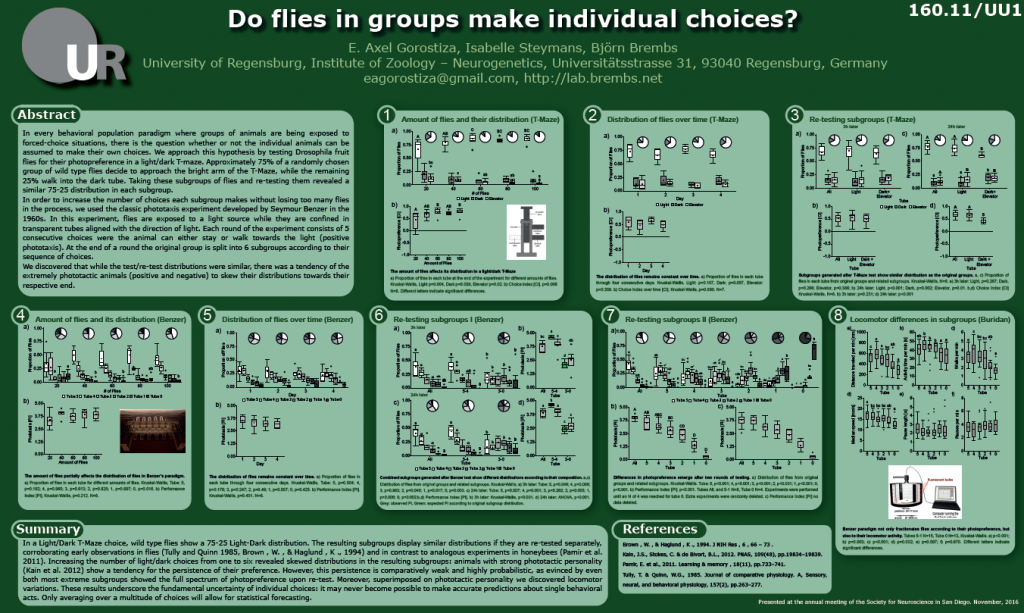This is our first poster at this year’s SfN meeting in San Diego. It’s about decision-making in fruit flies. We find a probabilistic form of decision-making that suggests that without understanding the mechanisms behind this fundamental uncertainty, we will never fully understand decision-making.
 Clicking on the image will let you download the PDF Version of the poster. This is our abstract:
Clicking on the image will let you download the PDF Version of the poster. This is our abstract:
In every behavioral population paradigm where groups of animals are being exposed to forced-choice situations, there is the question whether or not the individual animals can be assumed to make their own choices. We approach this hypothesis by testing Drosophila fruit flies for their photopreference in a light/dark T-maze. Approximately 75% of a randomly chosen group of wild type flies decide to approach the bright arm of the T-Maze, while the remaining 25% walk into the dark tube. Taking these subgroups of flies and re-testing them revealed a similar 75-25 distribution in each subgroup.
In order to increase the number of choices each subgroup makes without losing too many flies in the process, we used the classic phototaxis experiment developed by Seymour Benzer in the 1960s. In this experiment, flies are exposed to a light source while they are confined in transparent tubes aligned with the direction of light. Each round of the experiment consists of 5 consecutive choices were the animal can either stay or walk towards the light (positive phototaxis). At the end of a round the original group is split into 6 subgroups according to their sequence of choices.
We discovered that while the test/re-test distributions were similar, there was a tendency of the extremely phototactic animals (positive and negative) to skew their distributions towards their respective end.
These results are consistent with observations in single-animals where individual choice probability was discovered to be itself distributed over a population of flies (Kain et al., 2012). To test for potentially confounding effects of general activity and walking speed, we tested individual flies after their phototaxis experiments in Buridan’s Paradigm, where flies walk between two opposing black stripes. We detected small walking speed and general activity differences, suggesting a quantitative interaction between general and light-specific processes contributing to the performance scores in Benzer’s phototaxis experiment.
Kain JS, Stokes C, de Bivort BL (2012) Phototactic personality in fruit flies and its suppression by serotonin and white. Proc Natl Acad Sci U S A 109:19834–19839.














